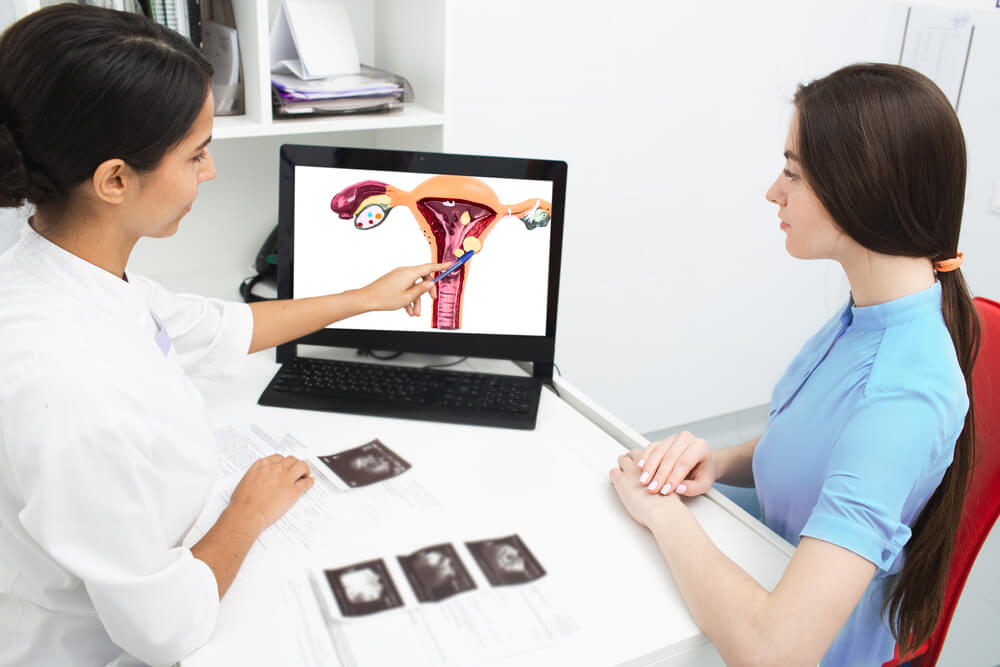To discuss myomectomy surgery, we must first discuss uterine fibroids. Fibroids are benign growths that originate from the muscle cells of the uterus and can affect 80% of women. Usually, they are harmless with no symptoms and require no treatment. However, sometimes they can cause troublesome symptoms for women and may even lead to some complications.
What Is a Myomectomy?
Now, a myomectomy is a fibroid removal surgery that providers recommend in cases when patients are experiencing symptoms such as pelvic pain, irregular periods, heavy bleeding, and urinary symptoms such as the frequent urge to urinate. Sometimes the procedure is recommended for fertility purposes.
During myomectomy, only the fibroids are removed while the uterus is preserved. This allows women who undergo myomectomy to retain their fertility.
However, retaining fertility is not the only reason to choose a myomectomy instead of a hysterectomy. Many women choose to keep their uterus out of preference.
On that note, If you are looking for a clinic with a reliable practice in minimally invasive surgery in Miami, Florida, contact us at Elite Gynecology Miami.

Types of Myomectomy Surgery
Based on the nature of the surgery, there are three general myomectomy types:
Abdominal myomectomy
Abdominal myomectomy is performed in the hospital under general anesthesia. The surgeon makes an incision in the lower abdominal area, similar to a C-section. Sometimes when the uterus is too large, the incision however is made vertically in the midline.
Abdominal myomectomy is performed when the fibroids are too many and too large to be safely removed through a minimally invasive approach.
In our practice, our patients are commonly discharged home on the same day of their surgery.
Abdominal myomectomy usually requires a slightly longer recovery time compared to laparoscopic myomectomy.
Laparoscopic myomectomy
Laparoscopic myomectomy is a minimally invasive surgery also done in the hospital under general anesthesia. Unlike abdominal myomectomy, where a larger incision is needed, here the provider uses the laparoscope through small incisions made in the abdomen. A total of 4 very small incisions are made. The fibroids are typically removed through a hidden incision in your belly button.
Our patients are also discharged home on the same day of their surgery. The recovery time is shorter than abdominal myomectomy.
Hysteroscopic myomectomy
The least invasive procedure is hysteroscopic myomectomy. This procedure is reserved for a special type of fibroids known as submucosal or intracavitary fibroids. This means the fibroids are either sitting or protruding in the uterine cavity. Because of their location, they can be reached through the natural opening of the cervix. The procedure is performed by using a specialized scope which is inserted through the cervix and into the uterus. Once the fibroid is identified, it is removed.
In our practice, this procedure is performed in our office under local anesthesia while the patient is awake. There is almost no to very minimal recovery period. Most of our patients return to their routine activity the following day.

Are There Risks With Myomectomy Surgery?
All surgical procedures carry a certain amount of risk, and fibroid removal surgery isn’t an exception. While minimally invasive procedures are considered safe, rarely, they may lead to the following complications:
- Infection
- Bleeding
- Injury to surrounding organs
- Myomectomy scar tissue
- Recurrence of fibroids
- Injury to the uterus
Also, scar formation after myomectomy is common. These scars, which are also called pelvic adhesions, could cause pelvic pain, infertility if they involve the fallopian tubes, and rarely bowel obstructions.
With new surgical techniques and a minimally invasive approach, the risk of adhesions is minimized significantly.
For women who are interested in fertility, it is important to know that in most cases, after having a myomectomy, the patient will need to have a cesarean section at the time of delivery rather than a natural vaginal birth.
Results and Recovery
After abdominal and laparoscopic myomectomy, most patients will experience some level of discomfort or pain the first few days and up to a week or so. This is common as the uterus is healing after removing the fibroids. However, with a proper medication regimen, the pain can be minimized.
Most patients will return to work or school with some restrictions within two weeks of their surgery.
If you were diagnosed with fibroids and need a consultation, please contact our office at (305) 602-3022 or request an appointment online.







